Got a check engine light and dreading a pricey shop visit? Many car owners want quick answers without paying a mechanic just to read a code. A reliable, budget OBD2 scanner can tell you what’s wrong, help you clear minor faults, and save time and money.
Below you’ll find short, easy-to-read reviews of the best-rated budget OBD2 scanners. I compare compatibility, app support, live data, and features that matter most — plus a simple comparison table so you can pick the best option for your needs.
| Product Image | Product Name | Best For | Check Price |
|---|---|---|---|
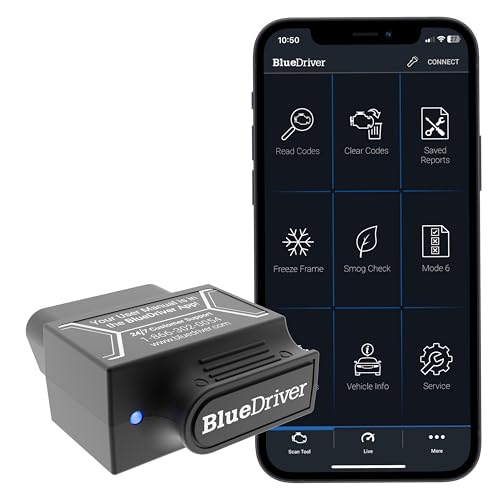 | BlueDriver Bluetooth Pro OBD2 Scanner | Best for DIY Diagnostics | Check Price |
 | OBDLink MX+ Bluetooth OBD2 Scanner | For Advanced Users | Check Price |
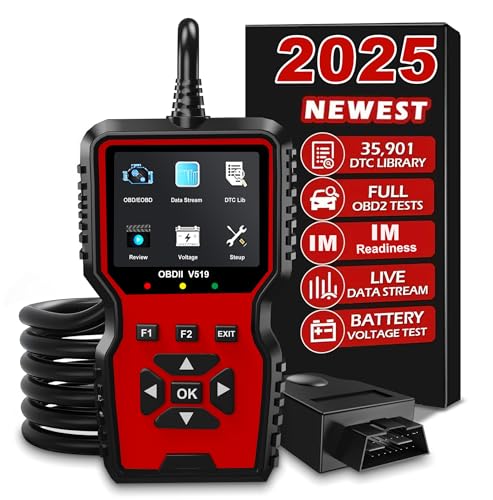 | Zecirl V519 OBD2 Diagnostic Scanner | Best Budget Option | Check Price |
 | Professional OBD2 Diagnostic Scanner Tool | For Quick Scans | Check Price |
 | Universal OBD2 Bluetooth Scanner Adapter | For iPhone & Android | Check Price |
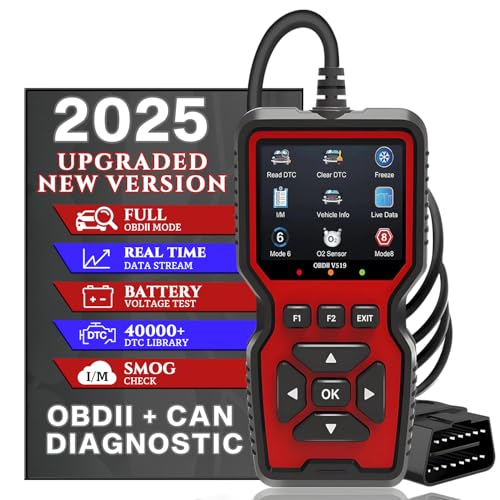 | CrysGuard V519 Professional OBD2 Scanner | Smog & Live Data | Check Price |
 | Osilly V520 Professional OBD2 Scanner | Reliable Daily Use | Check Price |
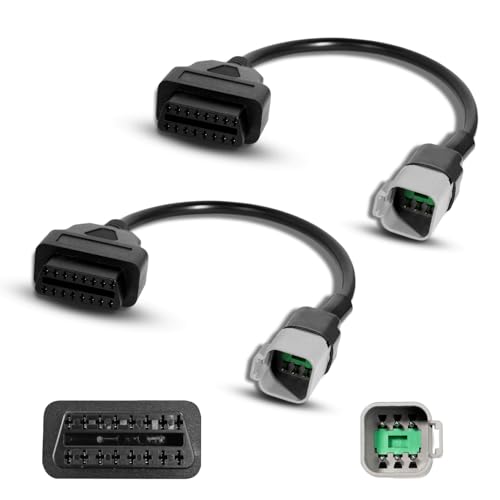 | StreytoTek 6-to-16pin OBD2 Adapter Cable | ATV/UTV Owners | Check Price |
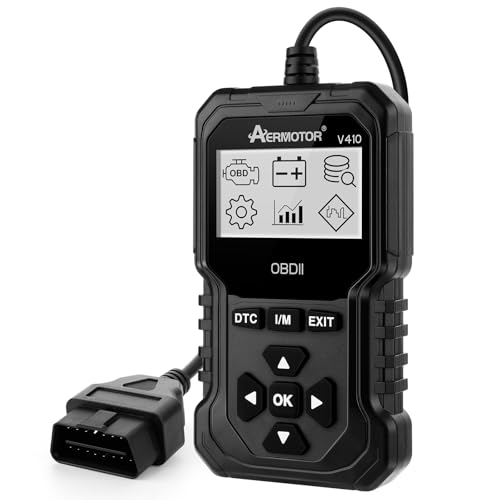 | Basic OBD2 Diagnostic Code Reader Tool | Simple Code Reading | Check Price |
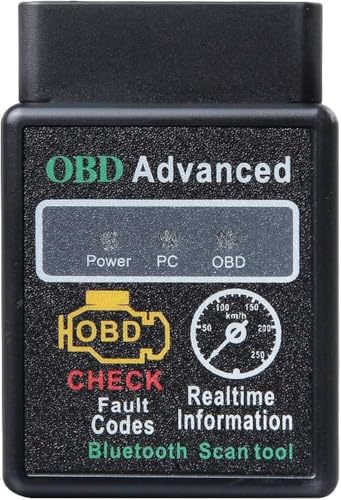 | Eonon V0056 OBD2 Bluetooth Adapter | For Eonon Stereos | Check Price |
BlueDriver Bluetooth Pro OBD2 Scanner

Perfect for DIY mechanics and budget-conscious drivers who want near-professional diagnostics on their smartphone without spending on shop-grade gear.
BlueDriver pairs via Bluetooth to iPhone or Android and uses a well-designed app to read and clear codes. It delivers enhanced, OEM-level trouble codes and live data streams. For example, if your check-engine light comes on you can view the code, see live sensor data, and decide whether to drive or fix it now.
The dongle is compact and solidly built, so it stays tucked in the OBD port without fuss. The app includes freeze-frame, smog readiness checks, and repair reports tied to verified fixes. Overall, it’s a powerful, affordable tool that covers most makes and gives clear next steps for repairs.
Pros:
- 👍 Provides enhanced, OEM-style trouble codes for clearer diagnostics.
- 👍 Intuitive smartphone app with live data and freeze-frame support.
- 👍 Compact, durable design that plugs in easily and stores neatly.
- 👍 Good value for features usually found on pricier scanners.
Cons:
- 👎 Requires a smartphone or tablet — no standalone screen.
- 👎 Some enhanced features are make-specific and vary by vehicle.
- 👎 Bluetooth range is limited, so you must stay near the car.
OBDLink MX+ Bluetooth OBD2 Scanner

This OBDLink MX+ is perfect for DIYers and budget-conscious car owners who want fast, reliable Bluetooth OBD2 diagnostics on their phone or tablet.
Its standout feature is a speedy Bluetooth Low Energy connection and broad protocol support, so it talks to most 1996‑on vehicles. That means faster code reads and more stable live data than cheap clones. For example, you can clear a check-engine light and watch live RPM and coolant temperature on your drive to confirm the fix.
It’s also small, well-built, and gets firmware updates through the companion app, keeping compatibility current. The MX+ includes security protections and works with many popular apps on Android and iOS. Overall, it’s a high-value pick if you want a reliable, modern Bluetooth scanner without breaking the bank.
Pros:
- 👍 Fast and stable Bluetooth LE connection for real-time data.
- 👍 Wide vehicle protocol support for broad compatibility.
- 👍 Works with many Android and iOS apps for flexibility.
- 👍 Compact, durable design with firmware updates.
Cons:
- 👎 More expensive than the cheapest ELM327 clones.
- 👎 Not a standalone reader — needs a phone or tablet to use.
Zecirl V519 OBD2 Diagnostic Scanner

Perfect for DIYers and budget-conscious drivers who want a simple, reliable OBD2 tool.
The V519 reads and clears generic OBD2 trouble codes and shows live sensor data. That means you can plug it in, pull a code, and watch live RPM or coolant temperature to narrow down a problem. It also reports I/M readiness and basic freeze-frame data. For example, if your check-engine light is on, you can identify a misfire code and monitor live RPM and fuel trim to confirm the issue.
It has a compact, rugged plastic housing and an easy-to-navigate menu. The cable is long enough to reach most steering columns. The straightforward design and clear screen make it durable and user-friendly. For basic diagnostics at home or in a small shop, the V519 is a strong, budget-friendly choice.
Pros:
- 👍 Very affordable for basic diagnostics
- 👍 Reads/clears codes and shows live data
- 👍 Broad coverage of OBD2-compliant vehicles
- 👍 Simple interface and sturdy build
Cons:
- 👎 Does not cover advanced modules like ABS/SRS on many cars
- 👎 Small screen limits long data streams or detailed graphs
- 👎 No wireless or app-based connectivity
Professional OBD2 Diagnostic Scanner Tool

Perfect for DIY mechanics and small-shop techs who want professional-level diagnostics on a budget.
This scanner reads and clears OBD2 trouble codes and displays live sensor data in real time, making troubleshooting fast and clear. For example, you can watch live RPM and oxygen sensor readings while road testing to pinpoint a misfire or lean condition. The clear menu and quick code lookup save time on common repairs.
It also offers a tough handheld design and a generous cable, so it holds up in the garage and reaches under the hood easily. Firmware updates are straightforward, keeping the tool current. Overall, it delivers accurate, useful diagnostics without the high price of dealer tools, making it a smart value pick.
Pros:
- 👍 Professional-grade diagnostics at a budget price.
- 👍 Live data and simple graphing for practical troubleshooting.
- 👍 Broad OBD2 vehicle coverage for most 1996+ cars.
- 👍 Durable build and easy-to-navigate interface.
Cons:
- 👎 Not as deep as dealer-level scan tools for advanced systems.
- 👎 Lacks some bi-directional controls used by pros.
- 👎 Limited manufacturer-specific coding features on certain models.
Universal OBD2 Bluetooth Scanner Adapter

Perfect for DIY car owners and budget-minded drivers who want a simple way to read and clear engine codes using their phone.
This adapter pairs over Bluetooth with popular OBD2 apps to pull check-engine codes and show live data like RPM, vehicle speed, and coolant temperature. For example, you can find a P0302 misfire code, watch RPMs during a test drive, and confirm the fix by clearing the code right from your phone.
It’s compact, plug-and-play, and fits most 1996-and-newer OBD2 vehicles, so storage and installation are a breeze. The sturdy plastic housing and low power draw make it practical for occasional and regular use. For a low price, it delivers core diagnostic tools that make it a strong, no-frills choice for home mechanics and commuters.
Pros:
- 👍 Very affordable for basic diagnostics
- 👍 Easy Bluetooth pairing with Android phones and many apps
- 👍 Wide compatibility with most 1996+ OBD2 cars
- 👍 Live data and one-tap code reading/clearing
Cons:
- 👎 Bluetooth model may be limited on iPhones (some apps require Wi‑Fi adapters)
- 👎 Lacks advanced OEM-level features found on pricier scanners
- 👎 Build is basic plastic—works well but not premium-feeling
CrysGuard V519 Professional OBD2 Scanner

The CrysGuard V519 is perfect for DIYers and small-shop mechanics who want a reliable, budget-friendly OBD2 scanner.
It shines with fast code reading and live-data graphing. You can pull generic and manufacturer codes, see real-time RPM, O2, and fuel-trim data, and clear the check-engine light. For example, watching live O2 voltage while driving helps you confirm a bad sensor before you buy parts.
Build quality feels solid and the menu is easy to navigate. It draws power from the OBD2 port, so no batteries are needed. For the price you get practical diagnostics, durable housing, and straightforward operation—making it a smart choice for routine troubleshooting.
Pros:
- 👍 Affordable with strong feature set
- 👍 Live data and simple graphing for quick diagnostics
- 👍 Wide vehicle compatibility (most OBD2 cars)
- 👍 Sturdy build and intuitive menu
Cons:
- 👎 No Bluetooth or smartphone app
- 👎 Lacks advanced bi-directional tests
- 👎 Firmware updates require a wired connection
Osilly V520 Professional OBD2 Scanner

Perfect for DIYers and budget-conscious drivers who want a simple, reliable tool to read and clear engine codes at home.
The V520 excels at the basics: it reads and clears OBD2 diagnostic trouble codes, displays live sensor data, and shows I/M readiness and freeze-frame info. In practice that means when the check engine light comes on you can plug it in, get the code and see live RPM and coolant temperature to help decide whether it’s urgent or safe to drive.
It also scores well on build and usability — a compact, sturdy body, a long cable for easy access under the dash, and a clear screen that’s readable in low light. For the price, it delivers dependable, plug-and-play performance, making it a smart value pick for routine troubleshooting.
Pros:
- 👍 Very affordable with strong value for basic diagnostics
- 👍 Easy to use — plug-and-play and clear code readouts
- 👍 Live data and freeze-frame help narrow down issues quickly
- 👍 Compact, durable design and long cable for easy access
Cons:
- 👎 Lacks advanced professional features (bi-directional tests)
- 👎 No Bluetooth or smartphone app support
- 👎 Screen can feel small when viewing lots of live data
StreytoTek 6-to-16pin OBD2 Adapter Cable

Perfect for DIY mechanics and techs who need a simple, budget-friendly adapter to use modern OBD-II scanners with older 6-pin vehicle ports.
The main feature is reliable 6-to-16-pin conversion that preserves signal integrity. It’s a true plug-and-play adapter, so you don’t need wiring skills. For example, if your classic or older import has a 6-pin factory outlet, this cable lets a current OBD-II reader access engine codes and live data without modification.
The cable feels solid and flexible, with molded ends that resist wear and reduce strain at the connectors. It’s compact and easy to stash in a glove box or toolbox. For the price, it’s an inexpensive way to extend the life of a modern scanner and avoid buying a dedicated legacy tool.
Pros:
- 👍 Very affordable—great value for occasional users.
- 👍 Broad compatibility for many older cars with 6-pin ports.
- 👍 Sturdy molded ends and flexible cable for longevity.
- 👍 Simple plug-and-play use; no wiring required.
- 👍 Small and easy to store in a toolbox or glove box.
Cons:
- 👎 Only converts 6-pin to 16-pin—doesn’t cover other legacy connectors.
- 👎 No included manual or advanced adapters for unique pinouts.
- 👎 It’s a passive adapter, so feature limits depend on your scanner.
Basic OBD2 Diagnostic Code Reader Tool

Perfect for DIY car owners and budget-conscious drivers who want a simple, reliable way to read and clear check-engine codes.
This reader focuses on the essentials: quick code pull and one-touch code clear. It plugs into the OBD2 port and displays standard trouble codes and a brief description. For example, you can pull a P0171 code, see it points to a lean condition, and decide whether to check the air filter or fuel system before heading to a shop.
The unit is compact, plug-and-play, and built with a sturdy plastic shell that stands up to garage use. Its clear screen and intuitive buttons make it easy to operate in low light. For basic diagnostics at a very low price, it delivers dependable performance without the extras most casual users won’t need.
Pros:
- 👍 Extremely affordable — great value for basic diagnostics
- 👍 Simple plug-and-play use — no app or pairing required
- 👍 Clear display of codes and brief descriptions
- 👍 Compact, durable design suited for garage use
Cons:
- 👎 Lacks advanced features like ABS/SRS or bi-directional controls
- 👎 No Bluetooth or smartphone integration for data logging
- 👎 Limited live-data graphs compared with pricier scanners
Eonon V0056 OBD2 Bluetooth Adapter

Perfect for budget-conscious DIYers and casual drivers who want a simple Bluetooth OBD2 tool to diagnose basic engine issues.
Its key strengths are plug-and-play Bluetooth connectivity and broad app compatibility. Pair it with an OBD2 app on your phone to read and clear trouble codes or watch live engine data. For example, you can pull a check-engine code, identify a loose gas cap issue, and clear the light after tightening it.
The adapter is compact and easy to stash in the glovebox. A small LED gives clear pairing status, and the simple plastic housing keeps costs down while staying durable enough for regular use. For basic fault-finding and live data viewing at a bargain price, it’s a solid choice.
Pros:
- 👍 Very affordable for basic diagnostics
- 👍 Easy plug-and-play Bluetooth pairing with many apps
- 👍 Lets you read/clear codes and view live data
- 👍 Compact design with visible LED status
Cons:
- 👎 May not pair with some iOS apps or devices — Android works best
- 👎 Lacks advanced features professional scanners offer
- 👎 Basic plastic build — functional but not premium
Buyer’s Guide: 3 Key Factors to Consider
Compatibility & Protocol Support
Choose a scanner that supports the OBD-II protocols your vehicle uses (CAN, ISO, KWP, etc.). Most cars sold in the U.S. since 1996 and EU petrol cars since 2001 are OBD-II compliant, but always check the product specs for explicit vehicle and protocol support to avoid compatibility surprises.
Ease of Use & App/Interface
Decide whether you want a standalone handheld unit (no phone required) or a Bluetooth/Wi‑Fi dongle that pairs with an app. Handhelds are plug-and-play and simpler for beginners; dongles give richer live-data graphs and cloud features. Pick a model with an intuitive app and clear on-screen menus for faster diagnostics.
Durability, Updates & Support
Budget tools vary in build quality and vendor support. Look for sturdy casings, a reliable connector, and a manufacturer that provides firmware/app updates and a reasonable warranty. Good support matters—updates keep the scanner compatible with newer car models and improve bug fixes.
Frequently Asked Questions
Q1: Will this scanner work on my car?
A1: If your car is OBD-II compliant (typically U.S. cars from 1996+, EU petrol from 2001+, diesel from 2004+), a budget OBD2 scanner should connect. Verify the scanner’s listed protocol support and any model-year exceptions in the product description.
Q2: What’s the difference between a Bluetooth/Wi‑Fi dongle and a handheld scanner?
A2: Dongles pair with a smartphone app for richer live-data, logging, and cloud features; they’re compact and cheaper. Handheld scanners are standalone, simpler to use, and don’t rely on a phone—good for quick reads and users who prefer a dedicated tool.
Q3: Can budget scanners read live data and freeze-frame info?
A3: Most budget scanners read basic live PIDs (RPM, speed, coolant temp) and freeze-frame data. Advanced functions like ABS/SRS diagnostics, service resets, or bi-directional tests are usually limited to mid- or high-end models.
Q4: Do I need to pay for subscription services?
A4: Many budget scanners work with free apps that provide basic features. Some manufacturers or third‑party apps offer premium subscriptions for advanced PIDs, enhanced reports, or cloud storage—check before buying if you want those extras without ongoing fees.
Q5: How often should I update the scanner or app?
A5: Check for firmware and app updates when you first set up the device and periodically thereafter—especially before diagnosing a newer car. Updates improve compatibility, fix bugs, and can add useful features.
Q6: Is it safe and legal to use an OBD2 scanner while driving?
A6: For safety and legal reasons, perform scans and diagnostics while the vehicle is parked. Do not operate a phone or scanner screen while driving; some jurisdictions restrict handheld device use—follow local laws and common-sense safety practices.
Final Verdict: Which One Should You Buy?
For most buyers the Autel AL319 is the best-rated budget pick—reliable, simple, and great for beginners who want a no-phone-required tool. If you prefer smartphone integration and live-data logging on a tight budget, the Veepeak/BAFX-style Bluetooth dongles offer excellent value. Choose the handheld for ease and the dongle for app-driven diagnostics.









